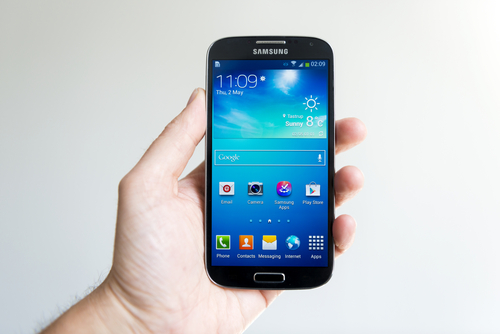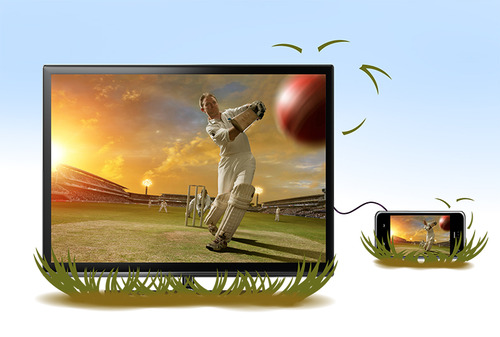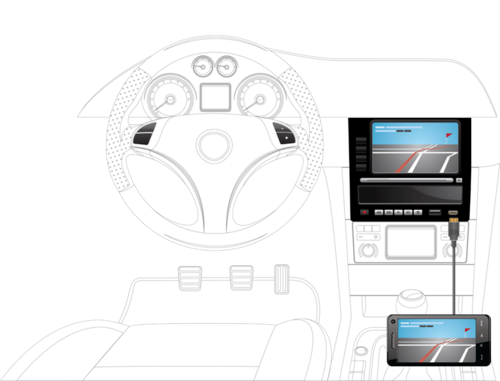iSwitched: How To Migrate Your Data From Your iPhone To Your New Android Samsung Galaxy S4
By Michael Bergen, Senior Partner Alliance Manager, MHL, LLC
May 13, 2013

So, you've decided to join the thousands of iPhone users who (for whatever reason) are switching from an iPhone to an Android smartphone like the new, sleek Samsung Galaxy S® 4. Don't get me wrong, the iPhone has forever changed the smartphone world, but many iPhone users are feeling limited by their lack of connectivity to other devices. They're exasperatingly saying, "It's time to find the right phone that appreciates me, my contacts, photos and data!"
If you've owned your iPhone for a while, you've probably had that sinking feeling in your stomach about what'll happen to your beloved apps, contacts, and data when you switch to an Android phone. Let's admit it, it's scary, but it doesn't have to be with these tips and tricks. Let's start with the music. If you have a ton of songs and want to transfer them to your Samsung phone, a free program called Samsung Kies, which is similar to iTunes, can easily import songs from iTunes. If you have another Android device, there are some limitations, but songs can be converted to MP3, then ripped by the computer and loaded onto the mobile device. There's also a good chance you are using Spotify or Pandora by now, in which case, you may not have any local music files, and you just need to download the Spotify and/or Pandora® app to your Android device.
Migrating your contacts and other data is possible, but it can be a little tricky. The first thing you'll need to do is purchase a third party application like Easy Phone Sync, which was offered free by Samsung on the Galaxy S® 3. There are other apps you can buy like WonderShare, but the free ones work fine. Once you have the app installed on your phones and computer, it's really just a matter of connecting everything via USB and using your computer as "the dump truck" to transfer the data and contacts between phones.
Finally, apps can't be migrated from iOS to an Android but if you have another iOS device like an iPad or iPod, you'll be able to use the same apps on those devices. Just use iTunes and download them to your other iOS device(s). Also, many common apps are available for free download on Android like Facebook, Pandora, Instagram, Angry Birds™ and Subway Surfers to name a few.
If you are still currently using your iPhone, and are still pondering the switch to the latest Android device, let me give you some additional food for thought and sweeten the pot to make the jump a little easier. Most of the latest Android phones come with MHL® technology already inside. MHL gives you the ability to mirror high-definition movies, pictures, or music from your phone to your TV or car infotainment system, using the same connection you would normally use to charge your phone. So what are you waiting for?
MHL: Your Mobile Ticket to Cricket
By DVR Duddu, India Country Manager, Silicon Image (MHL Founder)

You can almost hear the excitement reverberating through all of India now that the Indian Premier League tournament is underway. Why, because cricket is the most popular sport in all of India – so much so that the allocated tickets for the ICC Champions Trophy 2013 match between India and Pakistan sold out within half an hour. Our country loves cricket so much that I vividly recall the 2011 Cricket World Cup finals when excitement for the game hit an all-time high, and articles mused that it was the one day where one billion people were expected to “play hooky.”
Nowadays, getting a ticket to one of these big games is nearly impossible, but that doesn’t mean that avid cricket watchers have to miss any of the action. With today’s mobile phone technology, sports fans can easily watch their favorite teams on their smartphones while riding in a taxi, bus, or even an auto rickshaw. Once cricket fans get to their final destination, they can continue watching the game on a bigger screen with MHL technology – and in high-definition!
MHL technology takes content and makes it accessible anytime, anywhere. It also makes watching cricket games a more social and fun experience. Open your favorite mobile app and check your fantasy scores, view the latest results and standings, and look at the photo streams from past games and highlights from matches from your mobile phone to the big screen – all while rousing your family and friends.
What’s really great about MHL is there is a good chance your current smartphone or tablet already has the technology built in. There is an installed base of over 220 million MHL-enabled products, but many people don’t know they have MHL devices that can easily connect to their HDTVs. With the right data plan and/or Wi-Fi access, the sports viewing possibilities are endless.
The MHL team is traveling around the globe to spread the word about the technology’s benefits – and the next stop is India where they will be heading to Bangalore to host a press event on April 23, 2013. Silicon Image is one of the Founders of the MHL Consortium and we’re looking forward to the MHL team speaking with local press about the technology, its future, and demonstrate all of the exciting use cases.
So what do you think about MHL technology and how would you use it? Let us know by leaving us a comment below.
MHL – Start Your Engines!
By Judy Chen, PhD, President of MHL, LLC
April 14, 2013

I’ll be the first to admit that I’ve got a major smartphone addiction. These tiny devices carry our lives, from our favorite music and TV shows, to the pictures we capture and share, not to mention our email, Instagram feed and Facebook and Twitter pages. Our smartphones have become extensions of ourselves, reflecting our distinct tastes.
Next to my mobile phone, I can’t think of another thing I own that’s as closely tied to my identity except for my car. But cars are evolving. Increasingly, in the commercials I see, and in my conversations with other car owners, the infotainment system (a catchall term for the music and navigation system that keeps you entertained and informed while on the road), is becoming the centerpiece of the car. There’s just one problem. Cars are far behind smartphones.
Why can’t we design automotive infotainment systems to work with new apps and keep up with emerging technology? Or more simply stated, why can’t your car keep up with your smartphone? The simple answer is that the product design cycles of embedded solutions in the car are much longer than smartphone design cycles. Due to the vastly disparate life cycle and development times of smartphone (nine months development with a less than 18 month life cycle) and car infotainment systems (more than three year development, with a more than 10 year life cycle), the infotainment system constantly faces the risk of being obsolete by the time it reaches the market.
MHL technology changes this equation by enabling the connection of the smartphone to the car. Now drivers can access their smartphone applications on their automotive infotainment systems while charging their smartphones and not having to worry about a drained phone battery at the end of the trip. Utilize map services and GPS technologies already in most smartphones, stream music stored on your smartphone from Pandora or Google Music, even watch Netflix or locally stored movies in on the rear seat displays, (at up to 1080p), and more!
When you think about it, the smartphone connected car is a low-cost alternative for automotive manufacturers to offer in-dash apps, GPS, music, and video streaming services, without having to commit to yesterday’s technologies. In the past 18 months, MHL technology has become the de facto standard for transmitting A/V from mobile devices, with an installed base of more than 220 million products. That makes MHL a compelling solution for the connection between the mobile phone and the car.
Of course, connecting the phone to the car isn’t anything new; in fact the industry has coined a term for it – the “Connected Car.” What makes MHL technology unique is that it offers a solution that enables the application processing and rendering of video and audio to be done on the phone. Baseband high-definition audio (7.1 surround sound) and video (up to 1080p60) signals are then sent to the infotainment system, while a bi-directional communication channel enables control and security. By keeping the processing and rendering on the phone, without the need for any additional processing in the head unit, MHL technology is able to address the fundamental issue of connecting two ecosystems with such different development lifecycles as the smartphone and the head unit. The simple architecture of a MHL connected car enables consumers to access smartphone applications directly from the car’s head unit while also reducing time-to-market and implementation risks for the manufacturer
If you’re attending the SAE 2013 World Congress & Exhibition in Detroit, I invite you to join me on Tuesday, April 16 in Room No. D0-04AB at 9:30 a.m. for Session AE307: Multi-Media Systems. I will discuss how MHL creates a compelling solution for integrating the phone into the infotainment experience, highlighting the benefits of its market leadership, longevity, and ease of implementation.
The organizers of the session include Thomas Hermann, Ford Motor Company; Robert Klacza, Chrysler Group LLC; and Richard S. Stroud, Stroud Audio Inc. Hope to see you there!
Learn more at:
Consumer website: www.meetmhl.com
Adopter website: www.mhltech.org